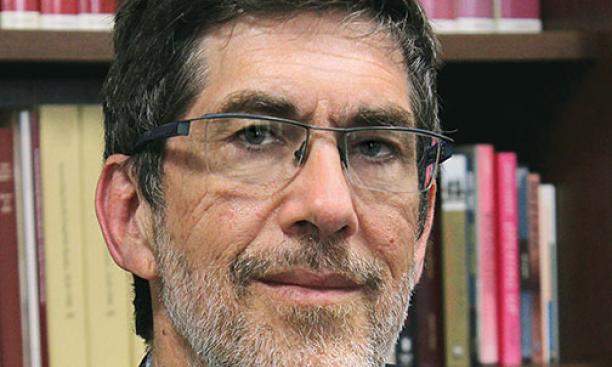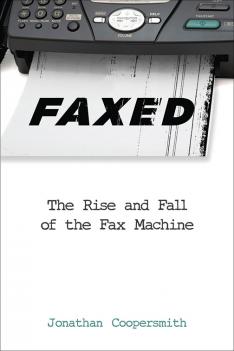
A revolutionary tool for communication burst on the scene in the 1980s: the fax machine. No need to wait for the mail — pages could be transmitted electronically in minutes. Yet by 2010, the fax was all but obsolete, a victim of many technologies, especially the Internet. Jonathan Coopersmith ’78, a history professor at Texas A&M University, explains how it happened in Faxed: The Rise and Fall of the Fax Machine.
Scottish engineer Alexander Bain received the patent for a “fac-simile” — a hefty machine that transmitted over a telegraph line — in 1843, but faxing didn’t really catch on until the 1980s, when it became a vital tool in business.
It was a very slow curve to get to the point of success, and then it took everybody by storm in the ’80s and ’90s: a long rise, a transition to the top, and then: “What’s a fax machine?”
You write, “Faxing had proved to be its own worst enemy, laying the public groundwork for acceptance of email and the Web.” How?
Entrepreneurs developed “fax-on-demand.” If I wanted to know the skiing conditions at a resort, I could fax a number and it would send them. The fax helped get people used to the idea of instant communication and receiving updated information electronically.
What has been the fax’s fiercest competition?
Throughout most of history, it’s been the simple letter. Until the 1960s [when the fax was used sparingly], to send a fax was 100 times more costly than sending a letter. The telegram and telex were the other major competitors. Finally, you began to see digitization in the form of emails and PDFs, destroying the market for the fax machine.
Has faxing completely disappeared?
There are some sectors — the medical field, some parts of the legal profession — where the signature [transmitted by] the fax machine is seen as having much higher validity than in email. There’s an age factor, too, especially in Japan, where the older generation is much more comfortable with faxing than using a computer.
What is the fax’s lasting legacy?
What is really impressive is how many people of a certain age — 40 and over — remember their first fax experience. It changed how people thought and communicated. The idea of a technology that’s so simple and yet it can communicate around the world — think of the power built into that.
Interview conducted and condensed by Tara Thean

What he’s reading: Doing Capitalism in the Innovation Economy: Markets, Speculation, and the State, by William H. Janeway ’65. “Janeway is basically saying that to successfully innovate you need not just entrepreneurs with good ideas, but financial investors willing essentially to overspend.”

